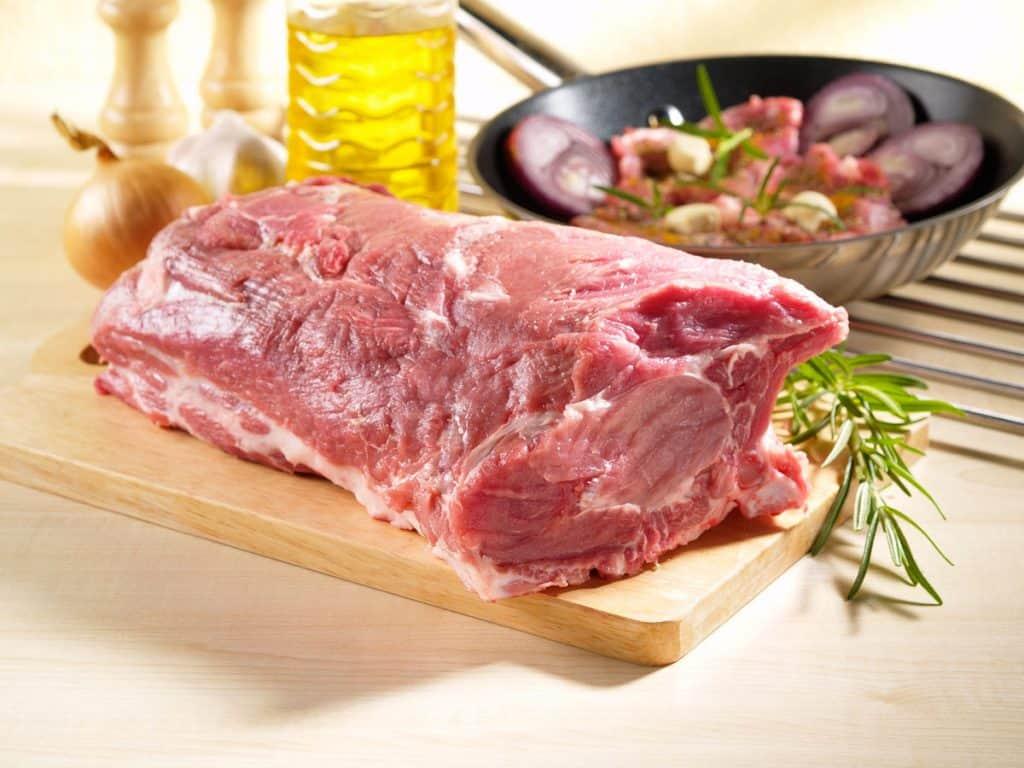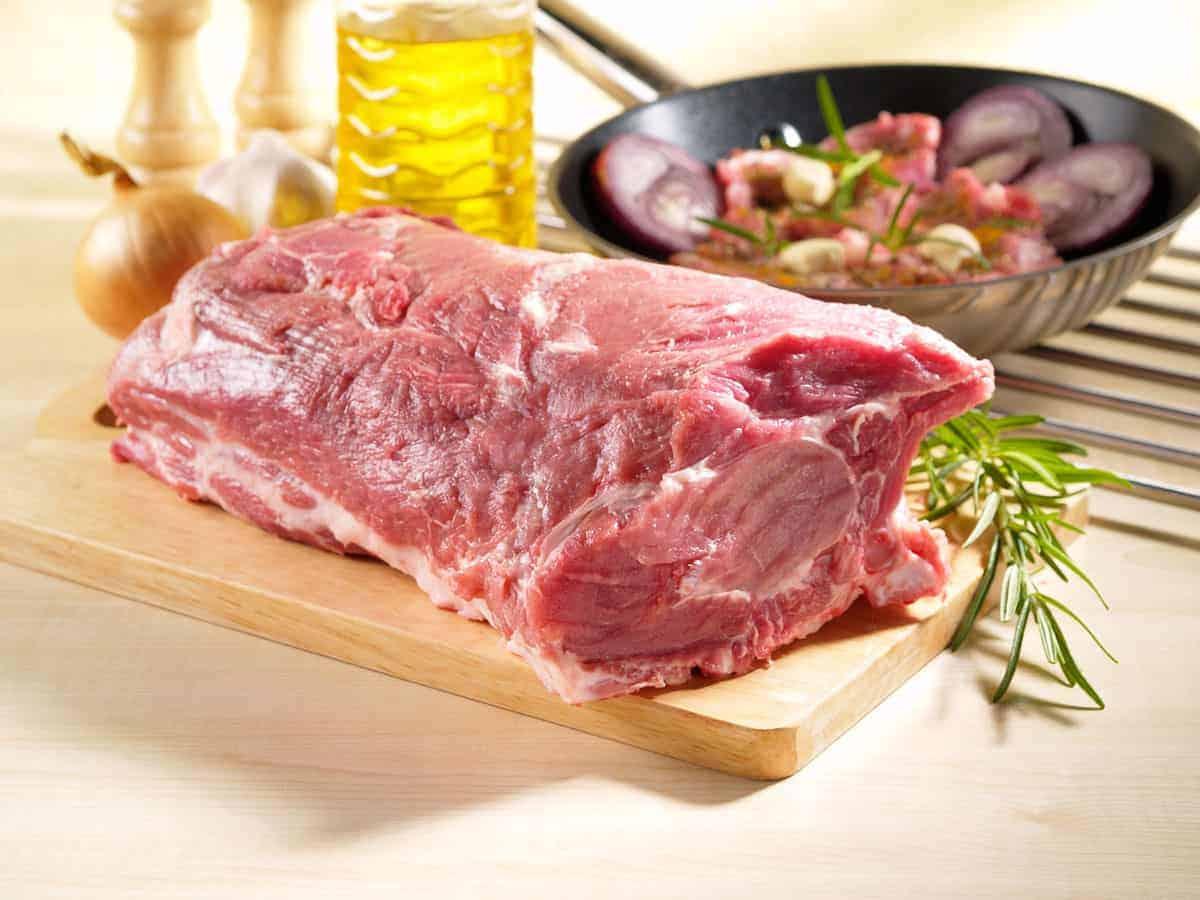It’s a classic scenario: You’ve trimmed and seasoned a nice big pork shoulder and are ready to fire up the smoker. The question is, where do you set the temperature, and how long do you have to wait before the pork is done? Our guide will teach you how long to smoke a pork shoulder at 250 degrees Fahrenheit, along with a few other tricks.
How Long To Smoke a Pork Shoulder at 250
If you plan on setting the grill or smoker to 250 degrees Fahrenheit, you can expect boneless pork shoulder to cook for about 90 to 95 minutes per pound. That’s long enough to allow the fat and connective tissues to break down nicely while the exterior gets nice and crispy.
A Primer on Pork Shoulder
If you’ve never prepared slow-cooked pork shoulder before, you’re in for a treat. This is an intensely flavorful cut of pork with a high fat-to-meat ratio. When it’s cooked over a low fire for hours at a time, the meat gets enticingly tender. The meat is also very affordable, especially if you buy in bulk.
When you look at pork shoulder, you might be intimidated by the amount of fat and connective tissue that you see running through it. Never fear-the long cooking process will allow the fat to cook down, contributing all that rich flavor and juiciness to the pulled pork.
One word of caution: When you’re shopping for pork shoulder, be aware that it goes by a couple of other names as well. “Picnic shoulder” and “picnic ham” are common labels. If you see either of these items on sale, know that they’re the same thing as pork shoulder.
A whole pork shoulder consists of the picnic shoulder and the pork butt, which has a similar flavor and texture but a slightly different shape. The cuts are usually sold separately, but you can substitute one for the other when making pulled pork.

The Lowdown on Temperature
Pork needs to cook to an internal temperature of at least 145 degrees Fahrenheit in order to be safely consumed. While that temperature is adequate for lean cuts like tenderloin and chops, pork shoulder and pork butt will actually need more time in the smoker.
If you’re planning to slice the pork shoulder, an internal temperature of 185 degrees Fahrenheit is acceptable. For pork that’s tender enough to fall apart when you shred it with a fork, you’ll need to wait a bit longer. Shoot for an internal temperature of 200 to 205 degrees when making smoked pulled pork.
Note: While there are some recipes that call for sliced pork shoulder, we think the meat is at its best when it’s allowed to reach the 200 degree mark. Otherwise, there might still be large chunks of fat and gristle to contend with.
How Long to Smoke a Pork Shoulder at 250 Degrees Fahrenheit
At 250 degrees, boneless pork shoulder should cook at a rate of about 90 to 95 minutes per pound. To put it in practical terms, this means that a 10-pound cut of pork shoulder will be done in around 15 to 16 hours.
That might sound like a long time, particularly if you’re a novice. For true fans of authentic barbecue, however, the end result is well worth the wait.
Also, bear in mind that the recommended temperature for making smoked pulled pork is 225 degrees. When the smoker is set to this temperature, you can expect it to take as long as two hours per pound before it’s done. Therefore, that 25-degree difference can be a real time-saver, as long as you keep an eye on the pork to make sure it doesn’t overcook.
Wrapping it Up
Pitmasters everywhere are familiar with the phenomenon known as the pork butt stall. This actually affects other large cuts of meat as well, including beef brisket and whole turkeys. Here’s what it means for you.
At around the five-hour mark, an 8- to 10-pound pork shoulder will seem to stop cooking for a while. This typically occurs when the temperature reaches a plateau of 150 to 170 degrees Fahrenheit. At this point, the moisture in the pork begins to evaporate, which keeps the temperature from rising any higher.
The worst thing about the stall is that it can last for hours, with no indication of when the temperature might start going up again. If you know what to expect, you can plan ahead and wait out the stall. If you’d prefer to speed things along, however, there is a way.
When the pork has been cooking for four or five hours, check the internal temperature using an instant-read thermometer. If the readout falls within the 150 to 170 degree range, take the meat off the smoker. Otherwise, let it cook until it reaches that window.
Once you’ve removed the pork from the heat, wrap it tightly with tin foil or butcher paper. At this point, the meat will have absorbed a nice hit of smoke flavor. The foil will create a shield that keeps the moisture from evaporating, so the pork will cook much more quickly as a result.
After returning the meat to the smoker, let it cook for another two hours. At this point, start checking the temperature. It should reach the 195 to 205 degree range in short order.
About Overcooking
Many first-timers make the mistake of thinking that it’s impossible to overcook pork shoulder. In truth, it is possible to leave the pork on the smoker for too long.
If you don’t remove the pork shoulder from the heat when the internal temperature reaches 205 degrees, the meat will begin to dry out. While you want the exterior to gain a dark crust-known as bark-during the cooking process, there’s a fine line between good bark and charred meat.

Proper Placement
When you’re smoking a pork shoulder, always place it with the fat side facing up. Otherwise, all that luscious fat will either drip down onto the coals or be funneled away by the grease management system. If the fat is facing up, it will slowly baste the meat as it renders, which is exactly what you want.
One other thing: Don’t remove too much of the fat before you apply the seasoning rub. You can trim away some of the excess, but since the smoked pork gets most of its flavor from the fat content, you’ll be shooting yourself in the foot if you take it away.
Other Tips For Making Smoked Pork Shoulder
- Don’t go overboard with the seasoning. A simple rub of kosher salt, black pepper, dry mustard, brown sugar, garlic powder, and brown sugar should do the trick. You can rely on store-bought brands, but it’s just as easy to whip up your own.
- Monitor the internal temperature of the pork with a high-quality probe thermometer. An accurate readout is essential to success.
- Similarly, check the grill’s temperature often to make sure it’s staying within the proper range. If it’s allowed to fluctuate, you’ll have a hard time monitoring your results. It’s easy to do this on a pellet grill since they offer a digital readout, but you can use a thermometer to check your progress on gas and charcoal grills as well.
- If you’re planning on making smoked pork shoulder all winter long, make sure the grill or smoker is kept in a sheltered location. Strong winds and cold temps can affect the grill’s heat retention. You can also invest in a grill cover or blanket to help keep the internal temperature steady in chilly weather.
- Remember that bone-in pork will take a bit longer to cook than the boneless variety. A 10-pound bone-in pork shoulder should take about 20 hours to cook when the temperature is set to 250 degrees. The bone contributes a great deal of flavor, so at least you’ll be rewarded for the long wait.
Final Thoughts
Setting the grill or smoker to 250 degrees can shave a few hours off your cooking time. Although we prefer to smoke pork shoulder at 225 degrees, it might be a good idea to aim a bit higher, particularly if you aren’t sure whether your smoker has decent heat retention. If the process is taking too long, there’s always the Texas crutch.
Best of luck, and happy grilling!



